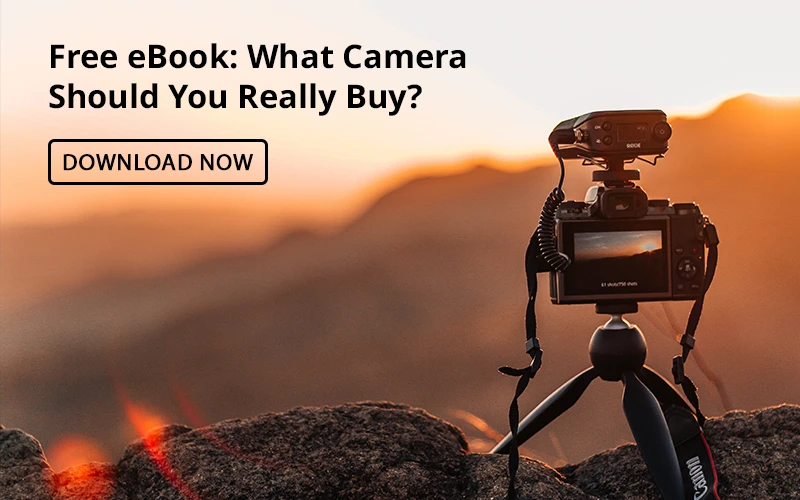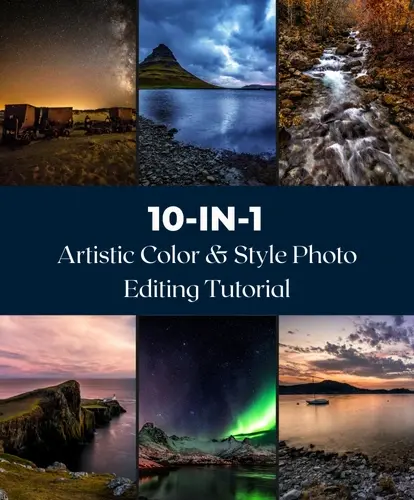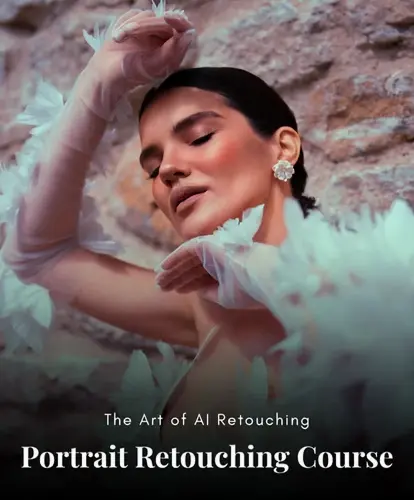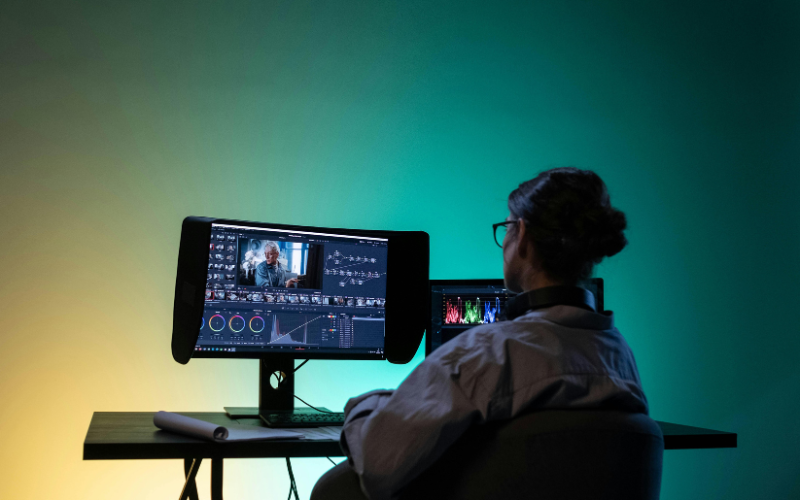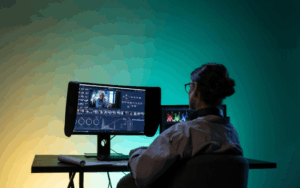All photographers start as beginners, and most likely, the first step is figuring out the confusing camera settings. If you have ever been overwhelmed with photography jargon like aperture or ISO, you are not the only one!
The good news is you do not need a degree in photography or years of experience to take a great photo. You need some knowledge and curiosity.
That is why we will check out 60+ photography terms that will help build your confidence and allow your next photo to be your best yet.
Table of contents
Basic Photography Terms: A to E
1. Aperture
Aperture means the opening that lets light go through the lens to the camera. You can change this hole’s size to control the amount of light that hits the sensor or the negative film.
The size of the aperture is key in deciding how much light gets in and how sharp or blurry the background looks.
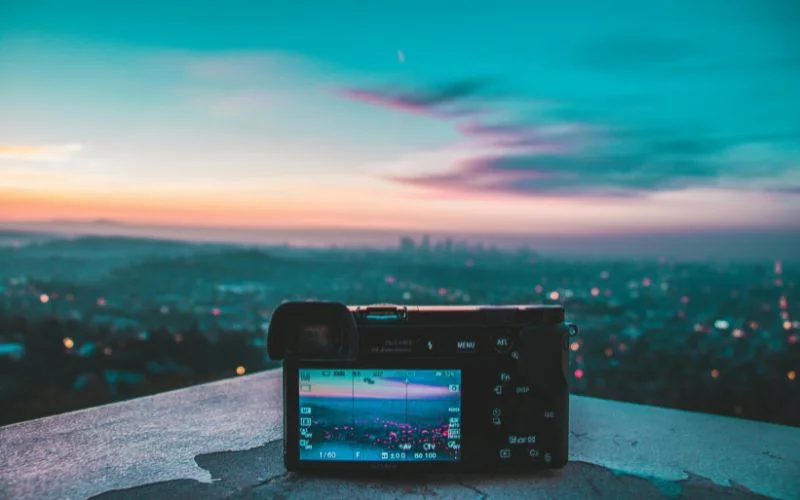
2. Aspect Ratio
The aspect ratio tells us how the width and height of a picture relate to each other. It is a ratio of width over height. The type of the camera sensor decides the aspect ratio, but you can tweak it after taking the photo with some editing tricks.
The ratios 3:2 (full-frame mirrorless, 35mm film) and 4:3 (usual in most DSLRs) are pretty standard for aspect ratios. The 4:5 ratio’s been catching on because that’s how Instagram likes to cut pictures that are tall.
3. Autofocus (AF)
A lot of modern cameras have this feature of Autofocus. Cameras started getting autofocus around the ’80s, and man, they just keep getting more intricate.
This gizmo takes a look at how far something that’s not moving is from the camera using sensors. Then, it tells tiny motors in the lens or the camera itself to tweak the lens so whatever you’re snapping a pic of looks sharp.
4. Bokeh
Bokeh effect is an optical phenomenon that makes bright out-of-focus elements aesthetically pleasing. Using a fast lens at its wider aperture turns a busy background into a blurred, homogenic canvas where light appears as soft shapes.
The number of blades in the diaphragm determines the form of these points of light. A higher number of blades makes these elements appear more circular.
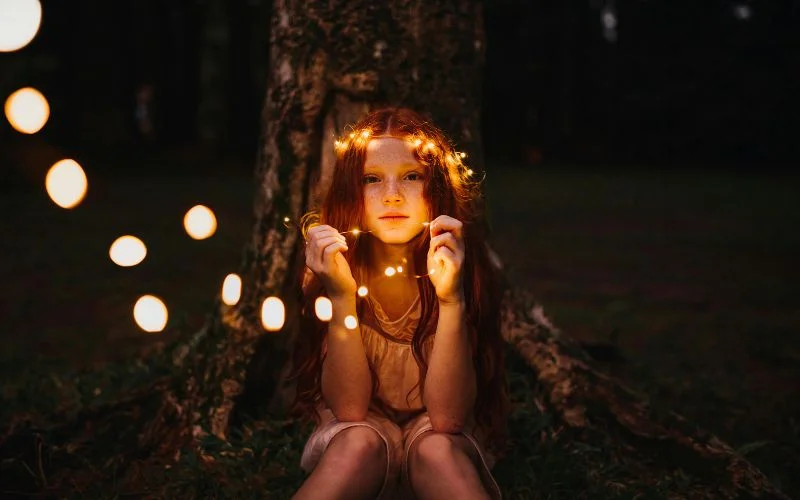
5. Bracketing
Bracketing is a technique used when a photographer is not sure if the exposure settings they have chosen will produce the best results. First, an exposure is made according to the meter reading.
Then, two or more further exposures are made of the same composition. Some are underexposed, and some are overexposed. This provides a photographer with more choice when they are post-processing their images.
You might also like: Shutter Speed In Photography: Meaning, Uses, Examples & More
6. Burst Mode
Photographers also call burst mode “continuous mode.” In this setting, the camera opens and closes the shutter repeatedly, taking consecutive photographs as long as the photographer holds down the shutter button.
Many cameras have two burst modes: low-speed and high-speed. Speeds vary from camera to camera.
7. Composition
Composition is the manner in which elements are positioned within a photo. It is considered one of the most important components of an image, as it allows the photographer to guide the viewer’s eye across the image towards the main subject.
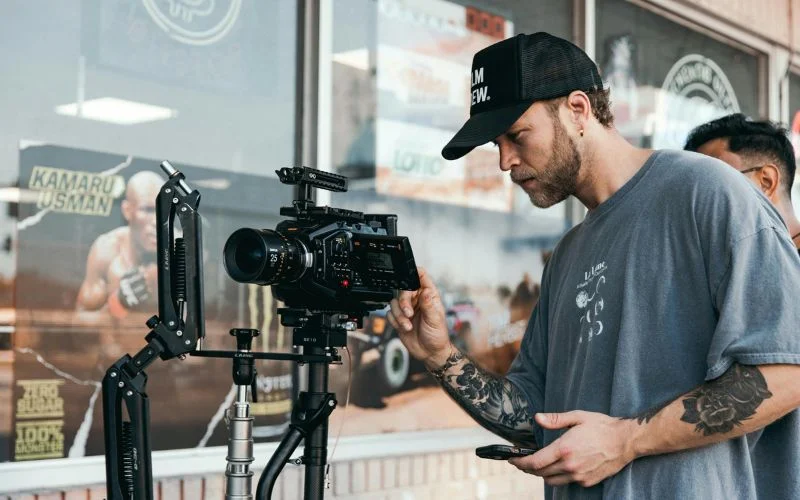
8. Contrast
The term ‘contrast’ is all about the gap between the super dark areas and super bright bits in a picture. Amping up the contrast means the shades and surfaces pop more, bringing life and zip to the snap. But if you keep the contrast low, your image could look dull or the same because there’s not much difference in tones.
9. Cropping
Cropping a photo means trimming or changing its edges to boost how it looks, to make sure the main subject gets all the eyes, or to tweak how big it is or its shape. Photographers do a bit of cropping to remove stuff that messes up the scene and get everyone to focus on the good part.
10. Depth of Field (DoF)
When you’re talking about how much of your picture looks super crisp, that’s the depth of field. A bunch of things you can mess with affects this, and snap shooters change them up to get the look they want. The hole in the lens, that’s the aperture, it’s super important for controlling the depth of field.
You pop open that aperture a bunch, and boom, you’ve got a super narrow depth of field. How close the camera is to whatever you’re shooting, and how far away the background stuff is, that plays into the depth of field too.
You might also like: Free Photoshop Plugins For Effortless Editing

11. Digital Zoom
Digital zoom makes an image’s middle part appear larger by magnifying it right in the camera. It’s kind of like using a zoom lens, but without screwing up the image quality or dropping the resolution the way digital zoom does. Opting for telephoto lenses to magnify doesn’t hurt the image quality too much.
12. Dynamic Range
Think of dynamic range as the scale from the brightest whites to the darkest blacks in a photo. Digital sensors catch a bit of a narrower dynamic range than what you get with film, and both don’t quite match up to what our eyes can see.
13. Exposure
Exposure is the amount of light that reaches the camera sensor. It also determines how light or dark an image is. The aperture, shutter speed, and ISO determine the exposure of an image.
14. Exposure Compensation
This is a feature on cameras that allows you to adjust the exposure settings beyond what the camera’s automatic mode has chosen. You can use it to brighten or darken an image, and it helps you fine-tune exposure in tricky lighting situations.
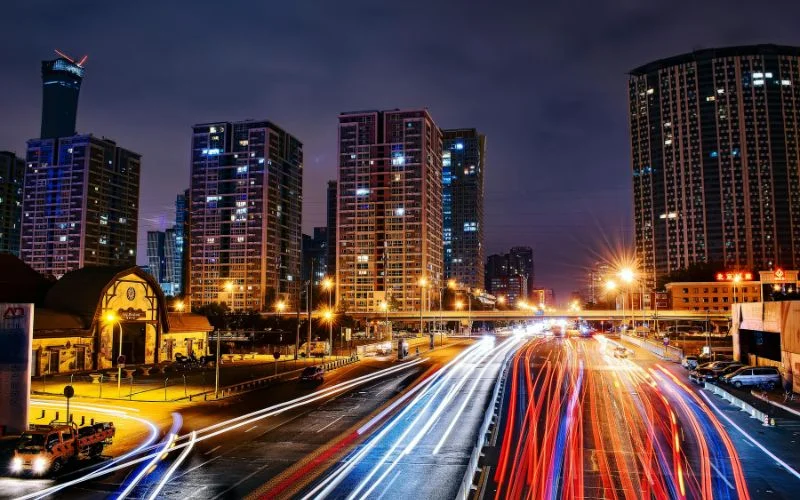
15. EXIF Data
Digital cameras and software generate EXIF data to add information about how a photo was made to the image file. It contains data about the camera, lens, settings, date, etc.
You might also like: A Beginner’s Guide to the Indispensable Exposure Triangle
Basic Photography Terms: F to J
16. F-stop (f/number)
The term F-Stop (f/number) refers to the measurement of the aperture openings of a camera lens. The f-stop number is indicated as ‘f/.’ The ‘f’, signifies the focal length of the lens and whatever comes after the ‘f’ is the division of whatever the lens creates to make it an aperture pixel.
17. Fill Light
Photographers use a fill light as any additional light for taking a photo. It can be ambient light or an introduced light source such as a flash or LED.
It can soften hard shadows in dramatic lighting setups. Moreover, it can also help create a more three-dimensional appearance that matches the depth of a photograph.
18. Focal Length
Focal length is nothing but the distance in millimeters between the center of a lens and the camera sensor. It defines the angle of view as well as the magnification of the subject. Focal length is the measure used to categorize the different types of lenses.
19. Golden Hour
Golden hour, also called ‘magic hour,’ is the period right before sunset and after sunrise. During this time, the sun is low on the horizon, so light takes on a redder shade than when it’s higher up in the sky.
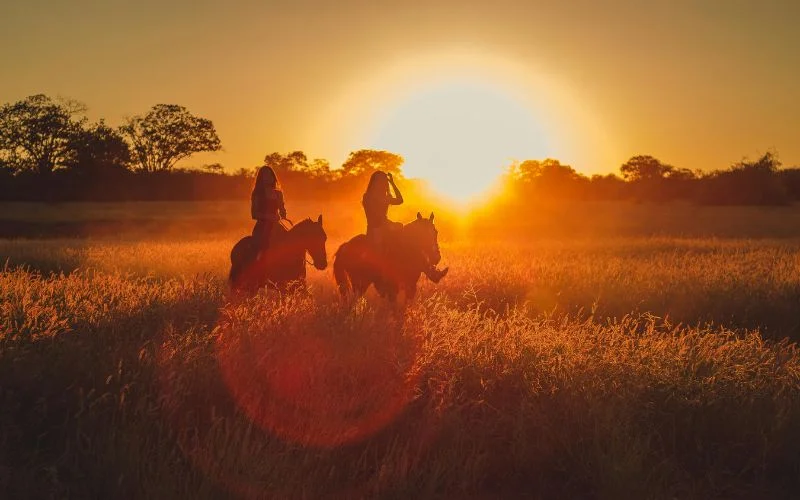
20. Grain (Noise)
Grain appears as small particles in film and photographs produced from film. It is the light-sensitive silver halides that metamorphose into metallic silver when exposed film is developed.
You might also like: Best Vector Graphics Software – A Complete Guide
21. Guide Number
A Guide number indicates the power or intensity of a flash unit’s output. It is measured in meters, at ISO 100.
The guide number helps determine the aperture needed for correct flash exposure relative to the distance between the subject and the flash. It also accounts for the flash’s output power in relation to the sensor’s sensitivity.
22. Histogram
A histogram is the visual representation of the luminance of an image. The left side of the graph represents the shadows, while the right side belongs to the highlights. The height of the histogram shows how many pixels there are for each specific luminance level.
23. High Dynamic Range (HDR)
HDR, which stands for high dynamic range, is a technique that gives images a wider dynamic range than the one captured by the camera.
This technique aims to represent a scene as close as possible to how the human eye saw it. HDR images are created by combining multiple photos with different exposure values.
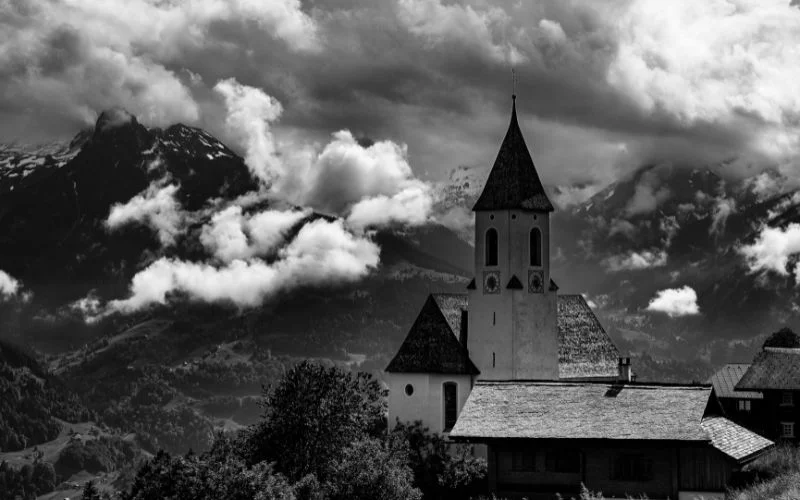
24. Hyperfocal Distance
It is the distance at which a lens should be focused to achieve the maximum depth of field possible. This is useful for landscape photography, where a considerable depth of field is desired.
25. ISO
ISO is how sensitive the camera sensor or film is to light. This is expressed as a number. The lower the number, the less sensitive the sensor or film is. This means you can set a lower ISO in bright, sunny conditions.
The lower the ISO setting the less digital noise is present, but that is somewhat dependent on the image sensor.
26. Image Stabilization (IS)
This feature in cameras and lenses helps to minimize blur from camera shake. This results in sharper images. It is helpful for handheld shooting or in low-light situations.
27. Intervalometer
An intervalometer is a camera accessory or built-in feature that allows photographers to automate the process of capturing images at set intervals over a specified time.
Intervalometers are commonly used for time-lapse photography, astrophotography, and long-exposure sequences because they precisely control exposure timing and image capture frequency.
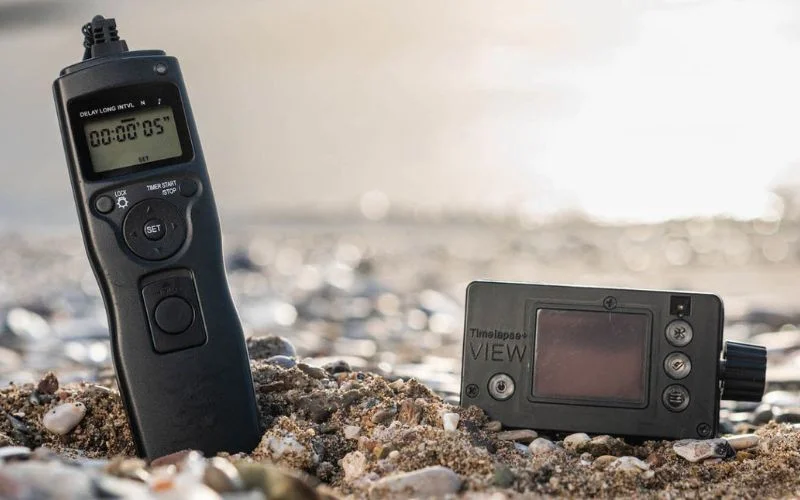
28. JPEG (Joint Photographic Experts Group)
JPEG is a widely used image file format. The term “lossy” means that when a photograph is saved, some of the very relevant information or data for that photo is omitted.
A high compression level for a JPEG is particularly low quality. The more a JPEG photo is compressed, the smaller the image file will be.
You might also like: Image File Format Guide: What’s the best Image File Format?
Basic Photography Terms: K to O
29. Kelvin (K)
Kelvin, or the Kelvin scale, measures the color temperature. It is closely related to the white balance option in digital photography.
30. Key Light
The key light is the main light illuminating a photograph. It can be natural or artificial.
31. Lens Flare
Lens flare is the effect of light scattering within a camera lens. This results in bright and sometimes colorful spots or streaks in an image. The lens flare effect is often seen as a flaw, but it can add artistic elements to photos.
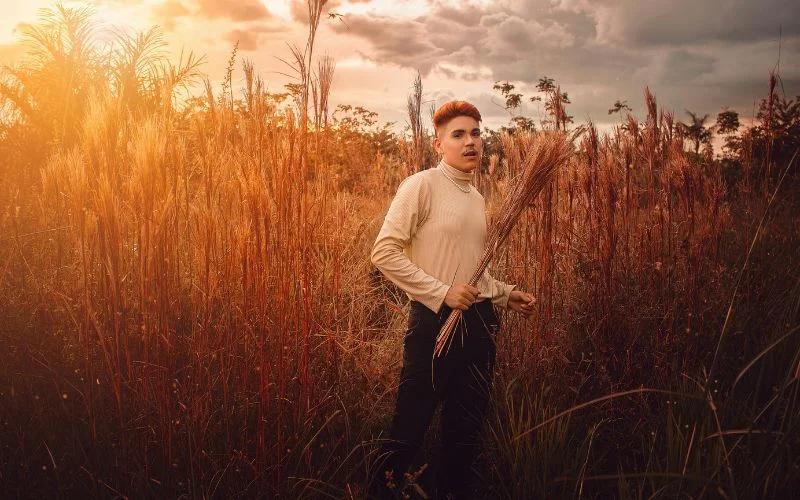
32. Leading Lines
Leading lines are visual elements such as roads, paths, or structures that lead the viewer’s eye towards a specific point in an image. This can create a sense of depth and guide the viewer through the photo.
33. Long Exposure
Long exposure is sometimes described as a slow shutter speed. This exposure is so long that leaves the shutter of the camera open for several hours. Small amounts of time can be set by the camera, or by a manual adjustment with the camera set to Bulb mode.
You might also like: How To Protect Images On A Website
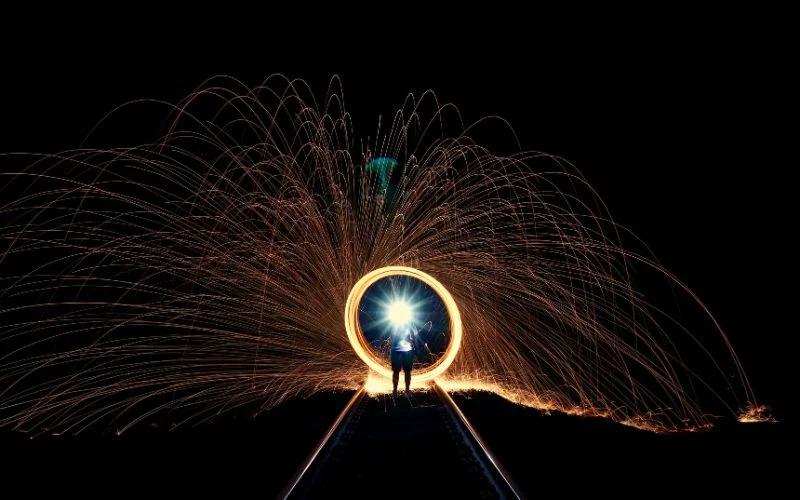
34. Manual Mode (M)
Manual mode is a camera setting that allows a photographer to control all the exposure settings.
35. Metering
In photography terms, metering means taking a meter reading before capturing a photograph.
36. Noise
Digital noise in photographs consists of miscolored pixels or pixels of incorrect luminance values in images produced using high ISO settings. It is most noticeable in underexposed and shadow areas in photographs.
37. Neutral Density (ND) Filter
ND filters block a given amount of light from passing through the lens. They can be measured in stops, and they come in varying strengths. A portion of the filter will cause part of the filter to block light while having a clear piece.
These filters are also popular among landscape photographers, as they can reduce the bluing effect of the sky in landscape pictures.
38. Overexposure
Overexposure occurs when the exposure value is higher than it should be, resulting in a loss of information over highlighted areas.
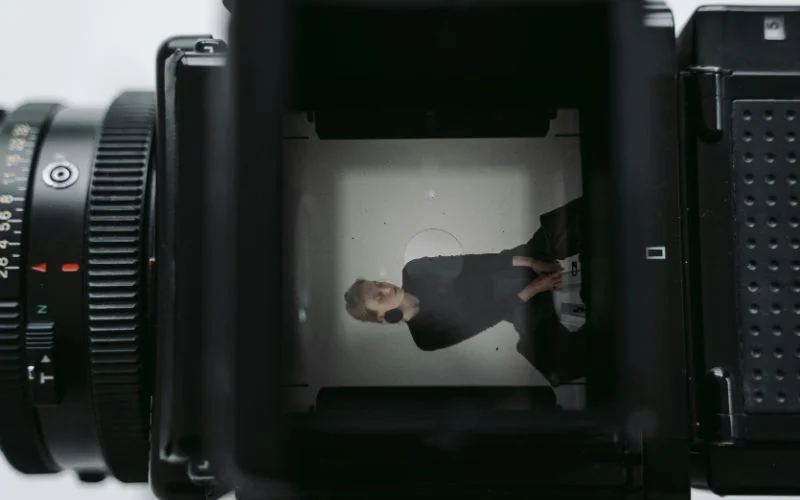
39. Optical Zoom
An optical zoom is more commonly called a zoom lens. This provides a photographer with the ability to manipulate the focal length of the lens to include more or less in their compositions without physically changing their location. Some cheaper models of cameras have digital zoom functionality.
You might also like: How To Sell Stock Photos Online | Top Websites To Earn Money
Basic Photography Terms: P to T
40. Prime Lens
Prime lenses are those with a fixed focal length. These lenses are usually smaller and faster as they have fewer moving parts and less complicated lens formulas. Prime lenses generally have max apertures of f2.8 and lower.
41. Panning
Panning is when, in an image, photographers take a picture of a moving subject so they create clingy or sometimes sharp images when shooting at slow shutter speeds.
42. Pixel
A pixel is the smallest part of a digital sensor or image.
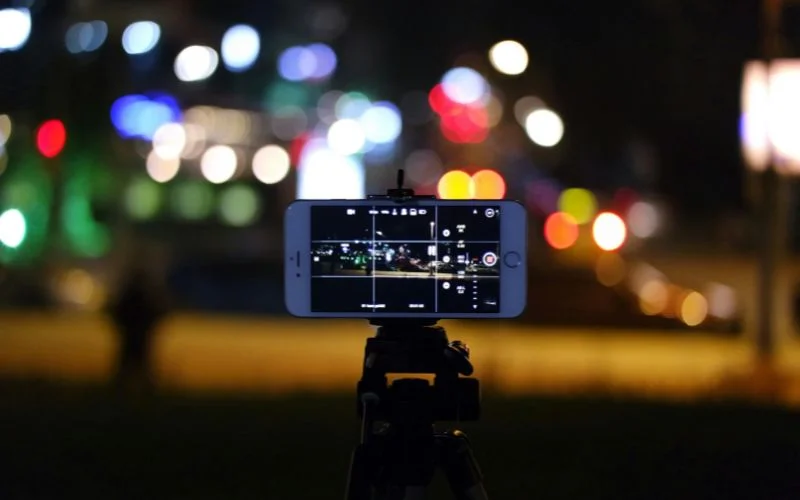
43. Quick Release Plate
Quick-release plates are small universal mounting plates that will make tripod-mounting easy. When you mount your camera to a tripod with a quick-release system, you can quickly and easily attach and detach any time when needed in seconds.
This will significantly reduce slippage and speed up the camera’s take-down and set-up on the tripod.
44. RAW
A RAW image file format keeps all the information that a camera or scanner captures during exposure. A RAW image format is uncompressed and retains all the details of an image. Each camera manufacturer establishes its file name extension to RAW images.
45. Rule of Thirds
The rule of thirds relies on the style of composition where the frame has been divided into a grid with two equally spaced horizontal lines and two equally spaced vertical lines.
You align the subject or primary aspects of your image with the four intersections or simply with the vertical or horizontal lines in some manner.
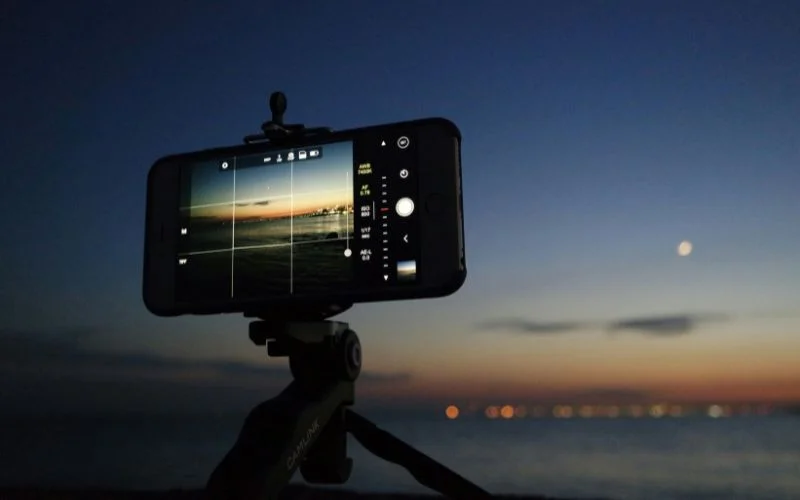
46. Reflector
Photographer-specific accessories like light reflectors enable photographers to redirect more light into the area of their composition. The argument of a light reflector can be anything from a simple piece of paper to a developed model with more reflective material options.
47. Shutter Speed
Shutter speed refers to how long the camera sensor is being exposed to light while the photographer is taking a photo.
The shutter speed at slow speeds can blur subjects that are in motion. Fast shutter speeds will freeze a millisecond in a moment, which is vital to sports and pet photography.
48. Soft Light
Soft light is a photography term used to describe the light that casts shadows with indefinite edges or soft edges. This type of light is indirect and diffused, such as when the sun is on a cloudy day.
You might also like: Clever Instagram Photo Hacks Every Content Creator Should Know
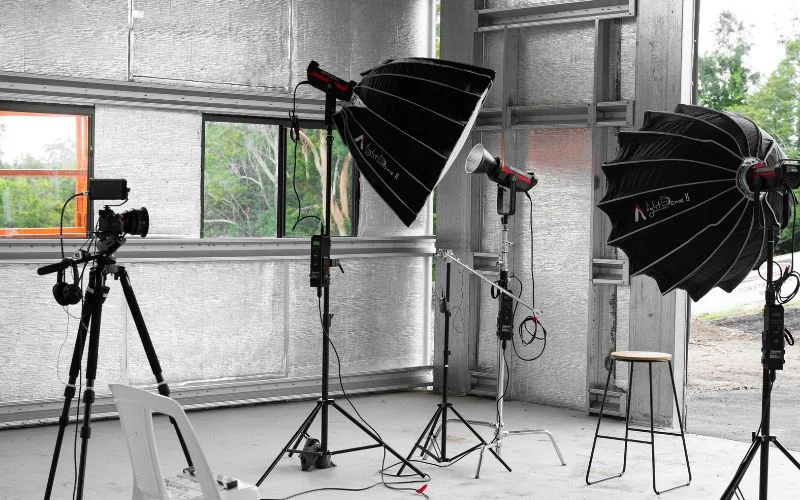
49. Saturation
Saturation refers to the color intensity of an image. As their saturation increases, colors appear more vivid and are considered purer. Decreasing saturation results in muted colors, with full desaturation giving the image a monochromatic version.
50. Telephoto Lens
Telephoto lenses have a focal length of more than 100mm. This style of lens has the effect of making the subject in a photo look larger. Distance has the appearance of being compressed in photos taken with telephoto lenses. The longer the focal length is the more compression occurs.
51. Time-Lapse
It is a photography technique where frames are taken at regular intervals and then stitched together to create a video that shows the passage of time. It’s often used in nature or architectural photography.
52. Tripod
A tripod is a three-legged stand that photographers use to position the camera. This helps reduce camera movement and stabilize the camera so they can take sharp, steady photos. A tripod is particularly useful for longer shutter speeds and using telephoto lenses.
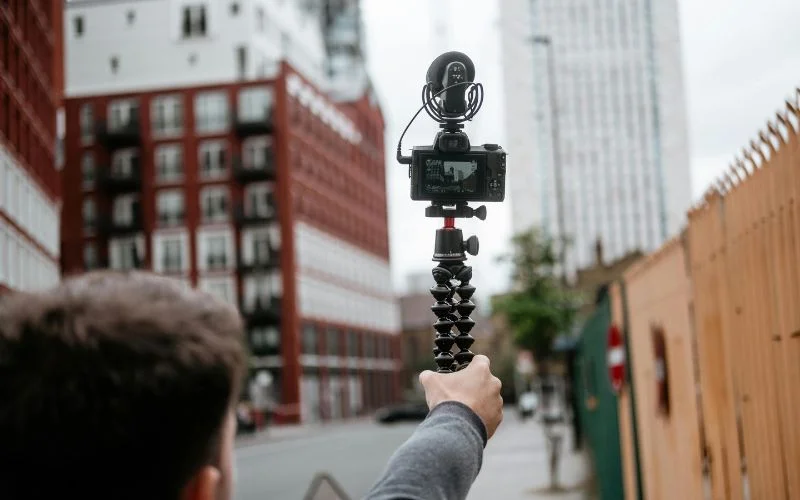
Basic Photography Terms: U to Z
53. Underexposure
When the sensor (or film) reaches an exposure level with too little light, the photograph becomes underexposed. The image turns out to dark because, ultimately, there was not enough light striking the sensor or film for a proper exposure.
54. Ultraviolet (UV) Filter
Ultraviolet (UV) filters limit the ultraviolet rays that reach the lens and therefore affect the photograph. UV filters also act as a lens protector for the front element of the lens. Photographers sometimes describe UV filters as haze filters
You might also like: Must-Read Photography Quotes for Creatives
55. Vignetting
This technique means darkening of the corners of an image occurs when a photographer uses wide aperture settings or specific lens types.
Photographers can use vignetting to demonstrate their creativity, which draws attention toward subject of the photo or reduce it through the editing process.
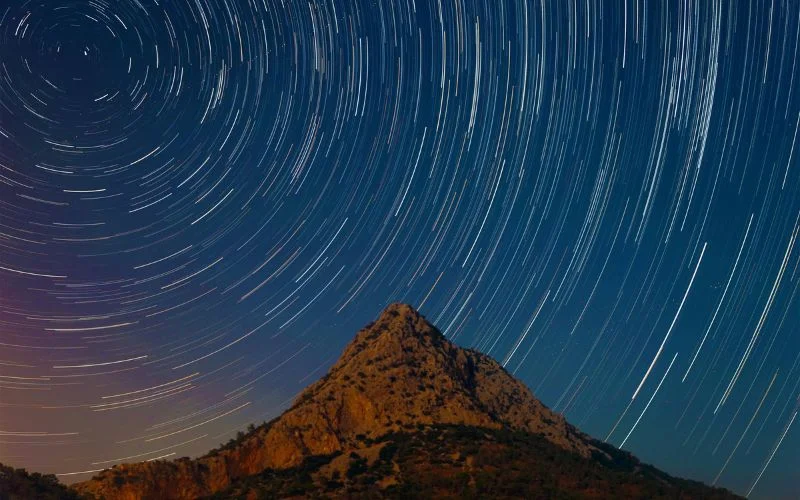
56. Viewfinder
It is an optical or electronic device used for composing and framing a photo before taking it. It’s typically located at the top of the camera body and allows the photographer to see what will be captured in the final image.
57. White Balance
White balance makes the colors in your photo look more accurate. It makes white things white no matter what the lighting is.
58. Wide-Angle Lens
A wide-angle lens allows you to capture more of the scene in one single image. Photographers often use it for close-up images or landscapes.
59. X-Sync Speed
X-sync speed refers to the fastest shutter speed your camera can use with a flash without causing dark areas in the image. If you move any faster, the flash may not expose part of the frame!
60. Yellow Filter
Yellow filter is one of the most popular types of color filters in black and white photography. When shooting monochromatic pictures, photographers use color filters to block specific colors from reaching the sensor and modify the image’s tonal qualities.

61. Zoom Lens
A zoom lens is one that has a variable focal length. This allows a photographer to capture a wider or narrower field of view of what they are photographing. These lenses constrain arrays of glass elements to produce high-quality images.
Optical zoom is achieved by using a zoom lens. Digital zoom is achieved by enlarging a portion of an image and producing lower-quality results than using a zoom lens.
62. Zone System
The zone system helps photographers control their exposure by breaking tones down into zones from black to white. This system also gives instructions for how to capture and print each of the details.
Photography Acronyms That You Must Know
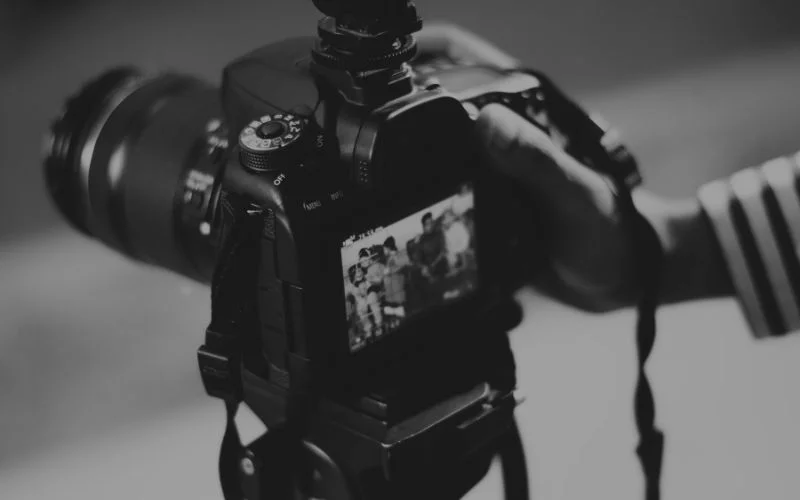
AE – Auto Exposure
Your camera will automatically set the exposure so that your image isn’t too dark or too bright.
AWB – Auto White Balance
Your camera will set colors automatically to ensure that whites appear white under different lights.
DNG – Digital Negative
This is Adobe’s RAW photo format. The DNG keeps all of the information about the image so you can edit freely later.
EV – Exposure Value
EV indicates how bright or dark the image appears. You can use EV to get your images lighter or darker.
FPS – Frames Per Second
This indicates how many images your camera is taking per second & is a necessary measurement in video or action shooting.
IBIS – In-Body Image Stabilization
Your camera reduces blurriness by stabilizing the image in the camera body, this becomes especially useful when shooting handheld.
PPI – Pixels Per Inch
PPI indicates how sharp an image looks when printing an image. More pixels make for sharp prints.
UHD – Ultra High Definition
UHD provides ultra-clear/sharp images or video quality, which is highly high resolution.
You might also like: Easy & Quick Guide To Make DIY iPhone Tripod in Half a Minute!
FAQs On Photography Terms
Q.1 Why should I be aware of what the different photography terms mean?
Ans. Knowing photography terms will help you advance your photography skills, and also to explain your situations with photographic techniques when conversing with photographers. You will also be able to apply the camera settings better.
Q. 2 Do only professional photographers use these photography terms?
Ans. Not at all! These terms help beginners, hobbyists, and professionals.
Q.3 Can we use these terms in smartphone photography and DSLR photography?
Ans. Yes! Lots of terms such as exposure, composition, and white balance terms apply to all types of photography, digital or analog, and of the smartphone variety, as well.
Q.4 Where can I find more resources for learning how to photograph?
Ans. You can find photography courses online, blogs, video tutorials, and practices.

